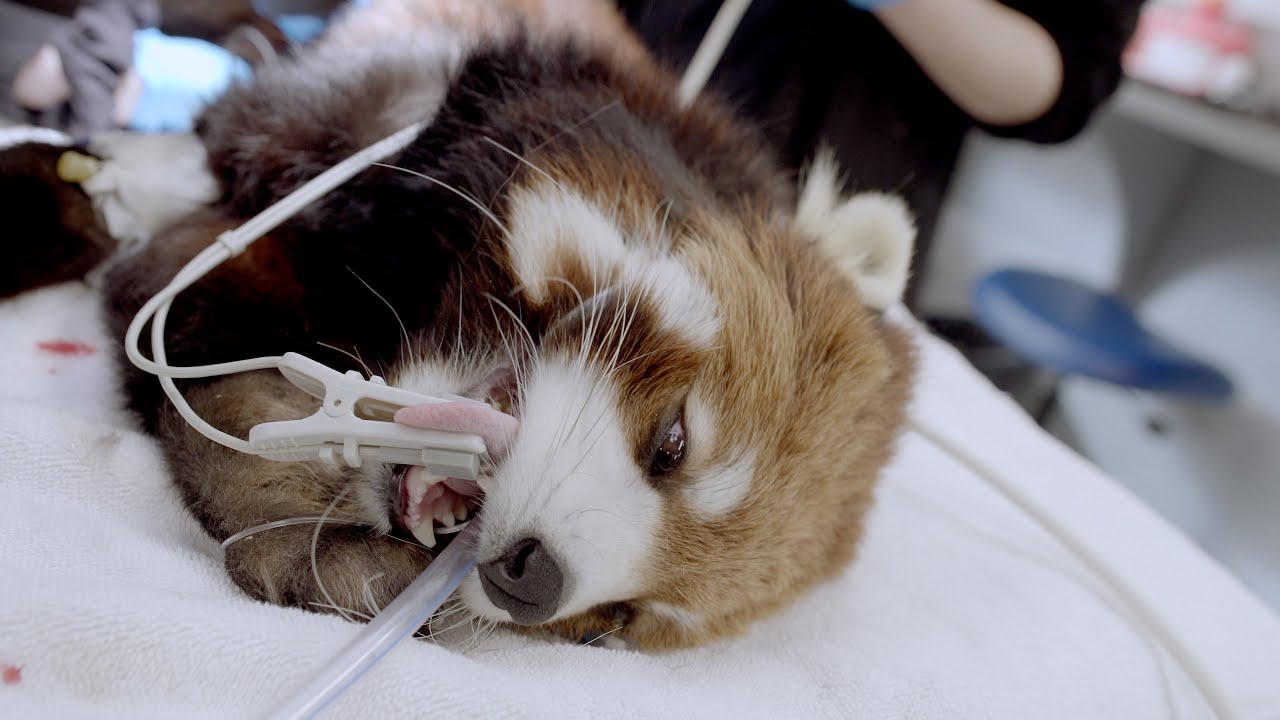– The importance of exit vet exams for red pandas in zoo management
– Insight into Red Panda health assessment procedures during exit exams
– Conservation implications of thorough health evaluations for red pandas
– Role of technology in enhancing red panda exit vet exams
Red pandas, characterized by their reddish-brown fur and bushy tails, are among the most popular but threatened species residing in zoos worldwide. Their management, particularly regarding health and conservation, is a critical area of focus in zoology. One key aspect of this management involves the red panda exit vet exam, a comprehensive health checkup these animals undergo before leaving a zoo, either for transfer to another institution or release into the wild. This article delves into the intricacies of the red panda exit vet exam, exploring its significance, the procedures involved, the conservation implications, and the role of technology in these assessments.
**The Importance of Exit Vet Exams for Red Pandas in Zoo Management**
Exit vet exams are vital in ensuring red pandas’ ongoing health and well-being within zoo populations and when transferring between zoos or released into the wild. These exams help identify any health issues that could impact the individuals, the new populations they join, or the wild populations they may reintegrate into. Disease control is a priority, as introducing even a minor illness into a new population can have devastating effects, especially for endangered species like the red panda, where every individual is crucial for the population’s genetic diversity and sustainability.
**Insight into Red Panda Health Assessment Procedures during Exit Exams**
The health assessment of a red panda during an exit exam is detailed and comprehensive, focusing on various health indicators and disease screenings. The process typically begins with a thorough physical examination, where veterinarians check the panda’s weight, body condition, fur, eyes, ears, and teeth for any signs of illness or malnutrition. Blood samples are taken for laboratory testing to screen for diseases and assess overall organ function. Feces are also examined for parasites, and X-rays may be taken to evaluate the animal’s bone structure and organ positions. These exams are crucial for detecting health issues that are not yet visible or symptomatic.
**Conservation Implications of Thorough Health Evaluations for Red Pandas**
Beyond ensuring individual animal health, the red panda exit vet exam is significant in broader conservation efforts. By carefully assessing each panda’s health before any transfer, conservationists can prevent the spreading of diseases that could threaten small, vulnerable populations, especially in the wild. Additionally, these health evaluations provide valuable data for ongoing research and conservation strategies, contributing to our understanding of the species and how best to protect it. The species’ genetic health can also be monitored through these exams, ensuring that breeding programs maintain genetic diversity and vitality in captive and reintroduced populations.
**Role of Technology in Enhancing Red Panda Exit Vet Exams**
Advancements in veterinary technology have significantly improved the efficacy of red panda exit vet exams. Digital X-rays offer immediate, high-resolution images of the animal’s internal structures, allowing for rapid diagnosis and treatment planning. Similarly, advancements in laboratory diagnostics enable precise disease screening and health assessments, ensuring that any interventions are timely and appropriate. GPS tracking technology, often implanted during these exams, plays a pivotal role in post-release monitoring, allowing conservationists to track the adjustment and movement of red pandas in the wild, providing invaluable data for conservation and research.
The red panda, exit vet exam, is a crucial component of zoo management, health assessment, and conservation efforts, ensuring that these enchanting creatures receive the best possible care while contributing to the overall understanding and preservation of the species. Through meticulous health evaluations and the application of advanced technology, zoologists and conservationists work tirelessly to safeguard the future of the red panda, both in captivity and the wild. This aims not only at protecting individual animals but also at securing the health and stability of populations worldwide, reflecting a committed effort to conserve this species and its habitat.
*****
Source Description
Join our vet, Dr. Taylor Gregory, as she and her team give our female red panda, Usha, an exit veterinary exam. For breeding purposes, Usha will soon be heading to the Columbus Zoo and Aquarium. We will miss her and we wish her all the best at her new home!


